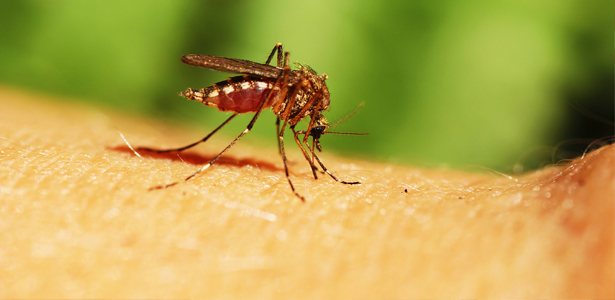Keep Yourself Healthy this Summer

Limiting your exposure to disease-carrying insects.
STORY BY: LESLIE RESCHLY BSN,RN
As the 2016 Summer Olympics in Brazil loom in the near future, athletes around the world are weighing the risk of attending versus the risk of being infected with the Zika virus carried by mosquitoes. Although there has been no documented case of Zika infection in the US (current cases infected elsewhere), most experts agree it is a matter of time.
Ticks and Mosquitoes are the most frequent insect carriers of disease in the Southeastern USA. Travel to other areas of the United States may expose you to a variety of disease types but there are several diseases more prevalent in our area.
Brunswick County is known to have 47 different types of mosquitos flying in search of a blood bite meal mainly from dawn to dusk. I have noted in my neighborhood that they bite 24/7! Mosquitos have gained local fame recently with their transmission of West Nile virus and Eastern Equine Encephalitis which most commonly causes fever and flu-like symptoms but may progress to brain swelling and meningitis. Asian Tiger mosquitos were brought to the US from Japan in shipping equipment in the 1980’s. This type of mosquito is about 1/8 inch long and noted to have black and white stripes on its legs and a white stripe down the center of its head and back. It may also be linked to West Nile virus and Eastern Equine encephalitis in the US. Zika virus, also transmitted by mosquitos, causes symptoms of fever, joint/muscle pain, pinkeye and rash but can progress to Guillain-Barre syndrome, which is a muscle weakness and paralysis syndrome. More devastating, male and females who procreate within a period after being exposed can risk the birth defect of microcephaly or a poorly developed brain.
The Lone Star Tick is prevalent in our area and can be, most often, identified by the white spot located on its back. Both nymphs and adult females bite humans but they also bite and are carried on animals so be sure to treat your pets that share your home! Lone Star Ticks have been associated with Ehrlichiosis, Tularemia and STARI. Ehrlichiosis has been found in our county and presents itself with fever, headache, fatigue and muscle aches. Medical treatment with antibiotics is usually successful. STARI or Southern Tick-Associated Rash Illness imitates the better known Lyme’s disease but is actually carried by the Lone Star Tick. The actual cause (i.e. bacteria or other) is not known. Symptoms include a rash at the site of bite, fatigue, fever, headache and muscle and joint pains. It also typically responds to treatment with an antibiotic.
Lyme’s disease carried by the black- legged tick and Rocky Mountain Spotted Fever, which is associated with the American dog tick, brown dog tick and Rocky Mountain Wood tick are well known for their symptoms but are not generally prevalent in our immediate area.
WHAT CAN YOU DO TO HELP YOURSELF REMAIN HEALTHY?
•“Tip and Toss” any containers in your yard with minuscule amounts of water. Mosquitos lay eggs, which can even survive in dry or cold environments. One female Asian tiger mosquito can lay 500 eggs in her lifetime, which is typically 3 weeks.
•Avoid wooded or brushy areas and hike in the middle of trails. Mosquito season in SE North Carolina is May-October with peak in July and August. Given the long season, it is noted that there can be 12 generations of mosquitos in one year!
•Apply Repellent of your choice. It is recommended that it contain 20-30% DEET as directed or 0.5% Permethrin on clothing. EPA.gov web site has a tool for finding the insect repellent right for you! Please be sure to follow label directions especially with children and infants.
•Wear lightly colored garments that cover your arms and legs. Launder in warm water and dry for at least 10 minutes to kill insects.
•Be alert to bite hazards of areas to which you travel. Contact your medical professional if you feel you may have been “infected”. In particular, if you are of childbearing age, please follow the CDC recommendations for travel and precautions in areas known to have Zika.
Mosquito Yard Spray
Big bottle of cheap Mint flavored mouthwash
3 Cups of Epsom salt
3 stale cheap beers (12oz each)
Mix all ingredients together until Salt is dissolved. Spray anywhere you sit outside. (i.e.: around the pool, deck, or the garden) It will not harm plant or flowers. It lasts approximately 80 days before you need to re-spray. Mosquitoes and bugs hate the mint smell!











Leave a Reply